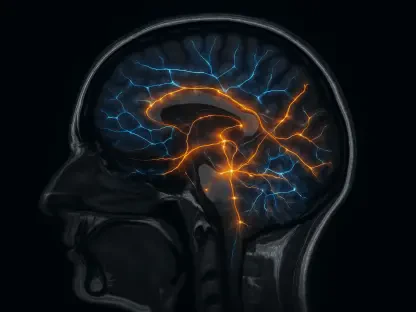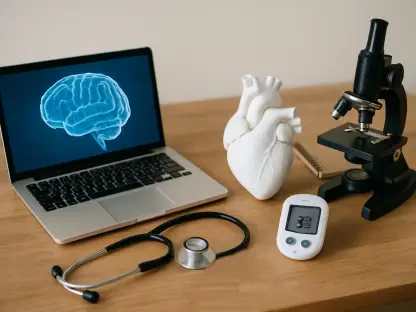As harsh winter conditions suddenly make a comeback in Ohio, local urgent care facilities face unprecedented challenges. After several years of mild winters, this season’s cold temperatures and heavy snowfall have brought a significant rise in health emergencies and accidents, putting a strain on healthcare systems. This article examines how urgent care centers like QuickMed are stepping up to meet the increased demand and relieve pressure on overwhelmed emergency rooms.
Rising Health Issues and Orthopedic Injuries
Increased Cases of Winter Illnesses
The sudden drop in temperatures has led to a significant uptick in cases of walking pneumonia, Respiratory Syncytial Virus (RSV), and flu-like symptoms across Ohio. Residents unaccustomed to such weather conditions are more prone to catching these illnesses, flooding both emergency rooms and urgent care facilities. The Centers for Disease Control (CDC) have indicated that emergency room visits are “Very High” nationwide, with Ohio showing a particularly concerning “High” level of acute respiratory illnesses. These ailments, compounded by the ongoing concerns over COVID-19, have created a perfect storm of health challenges that local healthcare providers must navigate.
Local urgent cares, such as QuickMed, have become a critical component in managing this influx of patients. Dr. Lauren Weber, the Medical Director at QuickMed, points out that these facilities are equipped to handle a wide range of non-life-threatening conditions. Services like suturing, laceration repair, wound drainage, and rapid testing for flu and COVID-19 are available, making them a valuable alternative to emergency rooms. This capability is particularly important as urgent care centers help divert less severe cases away from emergency departments, allowing hospitals to focus on more serious and life-threatening conditions. However, the increased patient volume has put substantial pressure on these urgent care centers, prompting staff to adapt quickly and efficiently.
Orthopedic Injuries due to Harsh Conditions
The return of cold weather has also led to a surge in orthopedic injuries, primarily due to slips and falls on icy surfaces. With snow and ice making sidewalks and roads treacherous, many residents find themselves needing immediate medical attention for fractures, sprains, and other injuries. These incidents exacerbate an already critical situation in emergency rooms, leading to backlogs and longer wait times. Many individuals are therefore turning to urgent care facilities as a faster and more accessible option for treatment.
Urgent care centers like QuickMed are strategically placed in underserved areas, enabling them to cater to a broader demographic that might otherwise have limited access to timely medical care. The typical patient volume at QuickMed ranges from 50 to 70 patients daily during the cold and flu season. However, this year has seen some locations treating over 100 patients daily. The increased demand is attributed to both the severe winter conditions and the closure of regional hospitals, which has left fewer options for immediate medical care. This situation has heightened the community’s reliance on urgent care facilities, underscoring their vital role in the healthcare ecosystem.
Adaptations by Urgent Care Facilities
Strategies to Manage Patient Flow
In response to the growing demand, urgent care facilities like QuickMed have implemented several strategies to manage patient flow effectively. By extending clinic hours and increasing staff levels, these centers aim to accommodate the surge in patients without compromising the quality of care. Additionally, the adoption of telehealth services has allowed many to seek medical advice and receive prescriptions without needing to visit the facility in person. This approach not only alleviates the pressure on physical locations but also provides a safer option for those who prefer to minimize their exposure to crowded healthcare environments.
QuickMed has also focused on streamlining administrative processes to reduce wait times and improve efficiency. Electronic check-in systems and improved patient triage protocols ensure that those with more urgent needs are attended to promptly. By leveraging technology and optimizing operational workflows, these urgent care centers can better handle the seasonal spike in patient numbers. Dr. Weber emphasizes that while the situation is challenging, the commitment of healthcare professionals and the community’s cooperation have been instrumental in navigating this demanding period.
Community Engagement and Prevention Efforts
As Ohio experiences a sudden resurgence of harsh winter weather, local urgent care facilities confront unprecedented challenges. Following several years of relatively mild winters, the current season’s frigid temperatures and heavy snowfall have led to a dramatic spike in health emergencies and accidents. This sudden increase in demand is putting significant pressure on healthcare systems already stretched thin. Urgent care centers like QuickMed are playing a crucial role in managing this surge. By stepping up to meet the heightened need for medical services, they are not only providing immediate care but also helping to alleviate the burden on overwhelmed emergency rooms. QuickMed has implemented several strategies to handle the influx of patients, such as extending hours, hiring additional staff, and streamlining processes to ensure more efficient care. This proactive approach is essential in maintaining the overall functionality of the healthcare system during such demanding times. Ultimately, urgent care centers are proving to be indispensable in navigating the challenges posed by Ohio’s return to harsh winter conditions.









